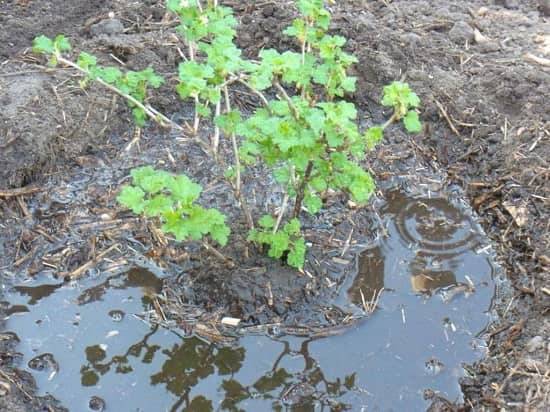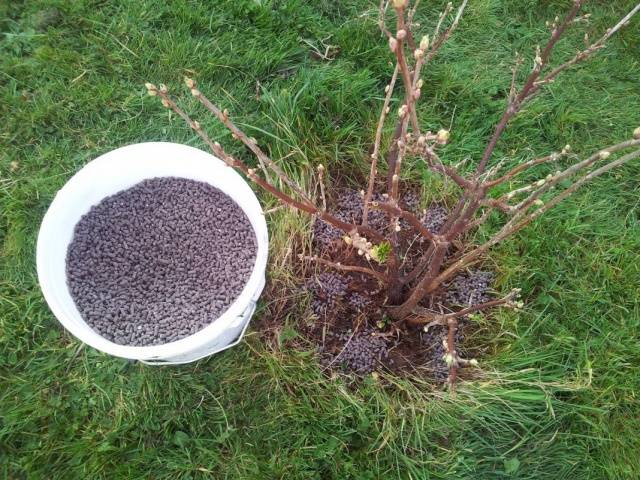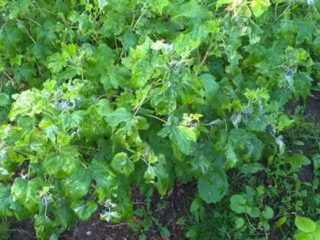Content
All fruit and berry crops in the garden require nutrition for good growth and fruiting. The content of elements necessary for plants in the soil may be insufficient both due to the characteristics of different types of soil, and simply because the plants have used up the entire supply of nutrients. In this regard, the application of fertilizers is necessary. Gardeners who grow berry bushes on their plots will find useful information about what to feed currants and gooseberries in the spring, what fertilizers to use, when and in what volumes to apply them.
Nitrogen fertilizers
Nitrogen is used by plants to synthesize proteins, which are 1/5 of this component. It is also necessary for the creation of chlorophyll, so it influences the processes of photosynthesis. Nitrogen is needed mainly for the growth of the green parts of the plant, especially in the early stages of their development. If there is a deficiency of this element, the shrubs grow slowly, their shoots become thin, their leaves become small and may fall off prematurely. This weakens the bushes, leads to shedding of the ovary and a decrease in yield. Highly productive varieties of currants and gooseberries especially suffer from nitrogen deficiency.
Excess nitrogen also has a negative effect on plants.The green mass grows quickly, the fruits ripen later than expected, flower buds are almost never formed, which means that there will be few flowers next year. Also, excess nitrogen reduces the resistance of shrubs to fungal diseases.
First spring feeding of currants and gooseberries carried out very early, as soon as the snow melts. Early application of fertilizers is due to the fact that their absorption is hampered by the dense structure of the soil and its insufficient moisture by mid-spring. Most often, a lack of nitrogen is observed on light sandy loam soils, but despite this, gooseberries and currants need to be fed on any type of soil.
It is best to use ammonium nitrate as a nitrogen fertilizer.. 40-60 g of this substance are scattered near the bush, distributed evenly around the projection of the crown. Then the soil is deeply loosened so that the granules fall into the soil.
Two-year-old currant and gooseberry bushes do not need spring fertilizing with nitrogen at all if the planting holes have been well fertilized.
If, despite the work carried out, the plants show signs of nitrogen starvation, in the spring you can foliar fertilize currants and gooseberries with urea. To do this, 30-40 g of urea is dissolved in a bucket of warm water and the bushes are sprayed with this liquid.It is better to work in the morning or evening, but always in calm weather. It will also be possible to carry out such foliar feeding if the ovary begins to crumble. This will help keep it on the bush.
Spring feeding of currants and gooseberries with mineral fertilizers can be replaced with organic fertilizers, and instead of ready-made mineral mixtures, humus or compost can be added to the soil. To do this, the ground around the bushes is covered with organic matter in such an amount that it covers it with a layer of 2-3 cm. For feeding, you can also use a solution of mullein in a ratio of 1 to 5 or bird droppings in a ratio of 1 to 10. The mullein and droppings are pre-infused for 2-3 days. The application rate is 1 bucket per 3 or 4 bushes. You can also mulch the soil around the bushes with lupine, sweet clover, clover, or prepare an infusion from them and feed the bushes.
Phosphorus fertilizers
Fertilizing currants and gooseberries in the spring should be done not only with nitrogen, but also with phosphorus fertilizers. A balanced diet containing phosphorus is necessary for enhanced growth of the root system, which begins to branch more strongly and penetrate deeper into the soil. Phosphorus helps accelerate the formation and ripening of berries and enhances the winter hardiness of shrubs. It is contained in many elements and vitamins that are found in the leaves and fruits of berry bushes.
Most often, phosphorus deficiency is observed in acidic soils and least of all in humus-rich soils. The maximum concentration of this element is observed in the upper layer of the earth and decreases as it goes deeper. Phosphorus is absorbed only by the root system, so the spring application of phosphorus fertilizers for currants and gooseberries can only be applied to the roots. Foliar feeding is ineffective.
The following phosphorus mixtures are used to feed shrubs:
- simple superphosphate;
- double;
- enriched;
- phosphate rock;
- precipitate
They bring them in before the start of the growing seasonso that the plants have time to be saturated with this element before the buds begin to bloom and develop normally throughout the current season. The dosage of fertilizers for fertilizing is indicated in the instructions for them, which must be followed when preparing the working solution.
Potash fertilizers
Potassium is necessary for berry bushes for the normal course of photosynthesis, increases the sugar content of fruits and their keeping quality, enhances plant resistance to diseases and frost resistance of roots and aerial parts, has a positive effect on the general condition of plants, accelerates their recovery after damage by pests, diseases, and frosts. Potassium helps newly planted plants to take root normally.
With a deficiency of this element, unfriendly ripening of berries is observed, resistance to fungal diseases and the overall productivity of shrubs are reduced. Potassium starvation can be determined, first of all, by the lower leaves, the edges of which first begin to turn yellow, and then turn brown and die. Potassium feeding of berry bushes is carried out on any type of soil, except clayey, but it is especially necessary for plants growing on sandy soil. Shrubs growing on clay are fertilized with potassium in the fall, after the leaves fall.
Potassium fertilizer for currant and gooseberry bushes, which is applied in the spring, should not include chlorine: Plants do not like this element. For feeding, potassium sulfate is suitable, which, in addition to sulfur and potassium, also contains calcium and magnesium. These elements are also necessary for plants. You can also use potassium nitrate and potassium carbonate (potash).
Under adult gooseberry and currant bushes, apply 40-50 g of fertilizer, spreading it evenly around the bushes, and then loosen the ground in order to embed the granules into the soil. For young bushes that have not yet begun to bear fruit, it is enough to apply half the amount of fertilizer.
What else is possible feed currants in spring and gooseberries? Wood ash is ideal for this. Pour 2-3 handfuls of ash under each bush or prepare a solution for watering from it: fill a bucket 1/3 with ash, fill it with hot water and leave it to steep for a week. Then 1 liter of this concentrate is diluted in 1 bucket of water and poured under each plant.
Fertilizers during planting
Not only adult currant and gooseberry bushes need feeding in the spring, but also young seedlings. In order for them to take root in a new place and begin to grow, you need to provide them with all the necessary substances. When planting, all 3 main nutrients are used: N, P and K. The fertilizers they contain are poured into the bottom of the planting holes. For fertilizing, you can use compost in an amount of 5 kg per bush in combination with 0.5 kg of wood ash. Instead of organic matter, you can use mineral fertilizers: a mixture of ammonium sulfate (40 g), potassium sulfate (60 g) and saltpeter or urea (40 g).
Feeding with iodine
Iodine is used in gardening for feeding and as a fungicidal agent that suppresses the development of numerous pathogens of various origins: fungi, viruses, bacteria. When iodine is added to the soil, it is disinfected.
Feeding currants and gooseberries with iodine in the spring is carried out according to the following rules:
- A solution of pharmaceutical iodine is used in microdoses: take 1-2 drops per 2 liters of water.
- Shrub seedlings are watered with iodine solution only after they have taken root and become stronger. Adult bushes can be watered without restrictions.
- Before spilling the solution on the ground, it must be moistened with plain water.
- In order for the fertilizing solution to become more effective, ash is added to it at a rate of 1 to 10.
- You can carry out foliar feeding by spraying the solution on the leaves from a sprayer.
Iodine can also be used to destroy cockchafer larvae and weevils. To do this, dissolve 15 drops of iodine in 10 liters of water and water the soil around the bushes with the solution. The solution should not come into contact with the plants themselves.The time for carrying out the work is before the buds open.
Conclusion
Feeding currant and gooseberry bushes in the spring is a necessary stage of agrotechnical work in the process of growing these crops. If it is carried out correctly, the result will be an abundant and high-quality harvest of berries.















